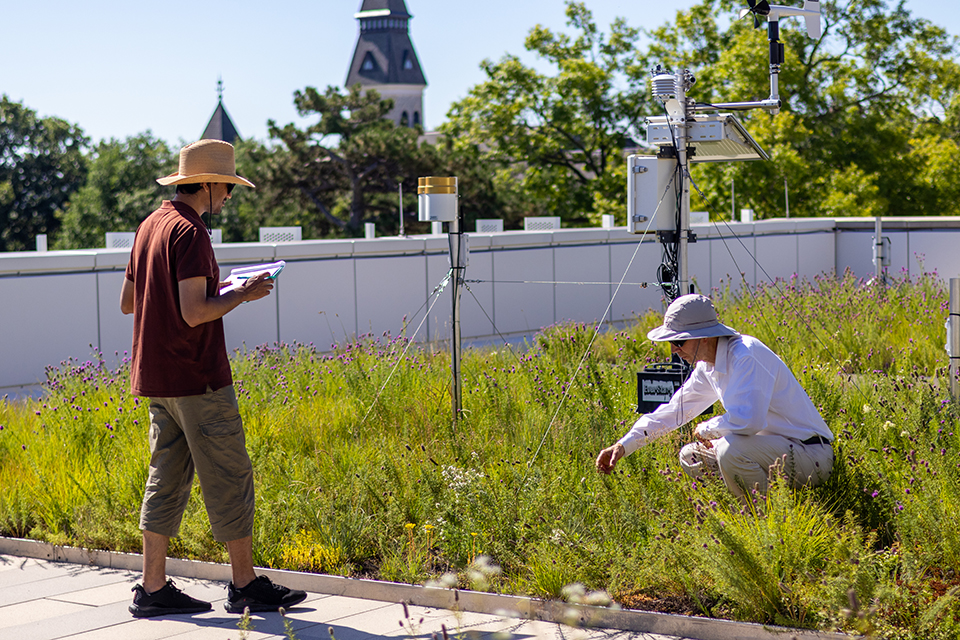K-State professor uncovers the beauty created when nature and urbanization are combined.
Nature and man-made structures tend to clash, though they are both beautiful in their own ways. But when they are combined correctly, like with the installation of a green roof, even-greater beauty and harmony can be uncovered.
Lee Skabelund, associate professor and Mary K. Jarvis distinguished chair in the College of Architecture, Planning and Design, uses his knowledge of science and design as a professional landscape architect to contribute to K-State’s green roof projects. He teaches the next generation of students about the wonders and importance of environmental restoration and planting design.
“Professor Skabelund has dedicated his career to integrating the science of ecosystems with the art of landscape design,” said Michael McClure, dean of the college. “His work has not only shaped landscapes but has also transformed the way our students and communities understand and implement sustainable design.”
Skabelund’s projects include the Memorial Stadium renovation — it has wildflowers and grasses where the stands used to be — and the APDesign Experimental Green Roof on top of Regnier Hall, intended to help researchers better understand how to create a successful green roof. His green roofs are a prime example of effective landscape conservation practices in urban settings.
“Some people look at these projects and say they’re messy — that it’s chaotic,” said Skabelund. “I see beauty in the diversity, and a kind of elegance. If you visit a natural system, it’s diverse and there’s a lot going on. I think our ecosystems and our designs should support that natural system.”
In recognition of his distinguished career, the American Society of Landscape Architects recently named Skabelund to its 2025 class of fellows — one of the highest honors in the landscape architecture profession.
Skabelund appreciates the wonder in the combination of nature and industry and continues to impart his knowledge and experience onto eager learners.
“I get to work with some great scientists, and our students have needed to see that relationship between science and design,” Skabelund said.
“Seeing how well they do in the profession, that’s what has been special,” he continued. “They bring in a lot of knowledge and talent when they come here, and my role has simply been to help them open additional doors of thinking, learning, observation and exploration.”
By Kate Ellwood
